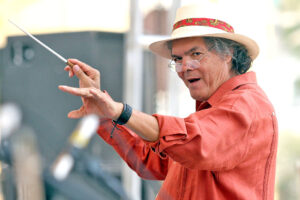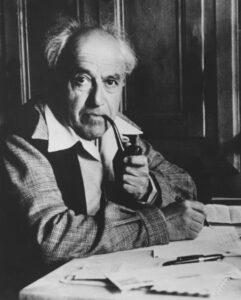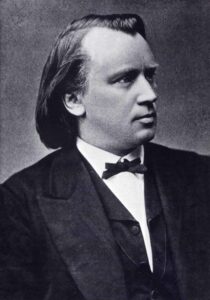
Prominent Mexican composer Arturo Márquez was born in Álamos, Sonora. Marquez’s father was a mariachi musician in Mexico and later in Los Angeles and his paternal grandfather was a Mexican folk musician in the northern states of Sonora and Chihuahua. As a result, Márquez was exposed to several musical styles in his childhood, particularly Mexican “salon music” which would influence his later compositional style. His Danzón No. 2 is one of the most significant and frequently performed Mexican contemporary classical compositions for orchestra. It was inspired by a dance style called danzón, which has its origins in Cuba but which Márquez heard while visiting a ballroom in the Mexican state of Veracruz. The music is notable for its rhythmic drive, enlivened by frequent syncopations and continually shifting orchestral colors.

Born in Switzerland, composer Ernest Bloch began playing the violin at age 9 and started composing soon after. In 1924 he settled in the United States, where he held several teaching appointments, including Mannes College in New York, the Cleveland Institute of Music and the San Francisco Conservatory of Music, and taught several noted American composers. Completed by Bloch before he came to America, Schelomo was the final work of his “Jewish Cycle,” a series of five compositions in which he expressed his personal conception of what Jewish music should be. The word Schelomo is the Hebrew form of Solomon, and the violoncello represents the voice of King Solomon. Initially, it was conceived as a vocal work, but by chance Bloch met cellist Alexandre Barjansky, whose playing had the brooding vocal quality that he envisioned for Schelomo. Performed as a single continuous piece, Schelomo falls into three main sections. The first section begins with the cello lamenting in the voice of King Solomon, inspired by the text, “Nothing is worth the pain it causes … All this is vanity.” In the second section, the orchestra builds to an enormous climax, at which point the voice of Solomon declares, “Vanity of vanities, all is vanity! Nothing!” In the third section, the solo part remains aloof from the orchestra’s themes and eventually collapses into silence.

Born in Hamburg, Germany, Johannes Brahms spent much of his professional life in Vienna, Austria. During his lifetime, he was recognized as a major figure in music, and he greatly influenced later composers. He combined the highly structured compositional styles of the baroque and classical periods with the freedom and expressiveness of the romantic era in music. Brahms began composing his Symphony No. 1 in 1854, but it was not completed until 1876. Two factors probably contributed to this long gestation. Firstly, Brahms was famously self-critical and destroyed many of his early works. Secondly, he was acutely aware of the expectation that he was in some sense Beethoven’s successor, and should produce a symphony that would measure up to those of Beethoven. Indeed, the symphony does contain some echoes of Beethoven. For example, the key of C minor is that of Beethoven’s fifth, while the broad theme of the last movement is reminiscent of the final movement of Beethoven’s ninth. Both the first and last movements of Brahms’ symphony open with a slow introduction, creating an atmosphere of tension and seriousness. This is heightened in the first movement by the persistent drumbeat from the timpani. After all this seriousness, the shift to the brilliant key of C major in the last movement creates a jubilant ending to the symphony.
